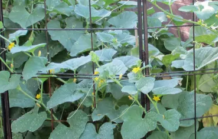With many things, free is good. When it comes to trees, free is great, unless the plants have negative qualities. “Volunteer” trees are those that establish themselves from seed. For certain trees this is a welcomed attribute as it requires little to no effort from the gardener. However, in the case of fast growing or invasive trees along with those that lack aesthetic value, volunteers are undesirable.
If the volunteer tree is one you would like to keep but perhaps in a different area, transplanting is an option if the tree is still small (less than two-inch diameter trunk). You will have the best success if you transplant during dormancy, specifically fall or early spring.
For volunteers that are not wanted, the trees will either need to be cut or dug out. Many trees will re-sprout after cutting so the stump will need to be treated with an herbicide.
Suckers differ from volunteers because they grow from the root of an existing tree. If herbicides are used on suckers it may cause damage or even death to the parent tree. Some trees that commonly produce suckers include: tree of heaven, honeylocust, black locust, hackberry, western soapberry, cottonwood, aspen, poplar, willow and boxelder.
Triclopyr and glyphosate are the herbicides most commonly available to homeowners. Triclopyr is found in many brush killers and glyphosate is found in Roundup as well as numerous other products. Read the label before purchasing to make sure that a cut stump treatment is listed. Most often the undiluted or lightly diluted product is applied to the stump immediately after cutting using a foam paint brush. Paint brushes with bristles are more likely to drip and cause herbicide damage to the surrounding plants.
Now is a good time to control volunteer trees. If using herbicides make note of the temperature requirements during application. Always follow label instructions for safe handling and application.
Cynthia Domenghini, Extension Agent




